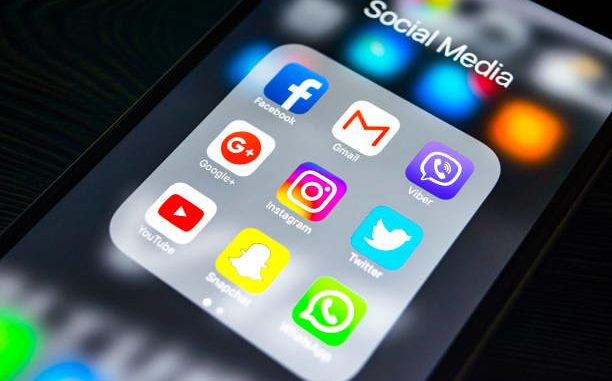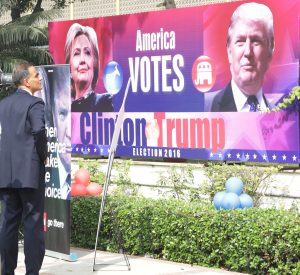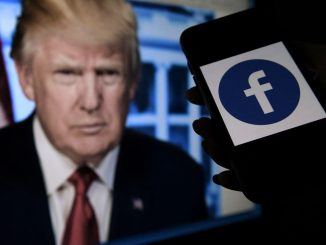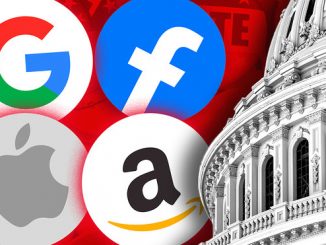
The internet and social media have become detrimental parts of everyday life. Jeff Orlowki’s 2020 Netflix documentary, The Social Dilemma, highlights the positive and negative results of this through visual imagery and discussions as seen through the trailer in figure 1. The Netflix documentary takes accounts from past and present employees from within the technology industry as to how the industry is affecting society. The thoroughly realistic depiction of the convergence of the technological world and reality demonstrates the nature of surveillance, AI/algorithms, and more. Alongside this, the past and present are debated as to how these power relations have come to be and where and how they will continue to affect humanity. Ultimately, ‘The Social Dilemma’ demonstrates a contextually insightful look into how the integration of social media and humanity has come to be.
Figure 1. The Social Dilemma Trailer (Netflix, 2020)
The Social Dilemma (Orlowski, 2020) puts into context how social media apps were originally used as an escape from reality. However, as these apps began to develop, a more business-focused environment was employed due to the consistent user rates. Tristan Harris, who previously worked as a designer ethicist for Google voiced that the concept of “50 designers […] who made decisions that would impact two billion people” (Orlowski, 2020) was never done before in human or technological history. The result of these designers’ work has defined how technology is meant to be used around the world, without any issue from consumers. Whereas, Janet Abbate (2017) claims that “early studies of “cyberspace” and “virtual community” highlight how social groups constructed the internet as a virtual space” (as seen in figure 2).

The Social Dilemma (Orlowski, 2020) encapsulates early online communities through the change from bulletin boards to Myspace and so on. These virtual spaces and communities have transformed from a social escape into everyday routine. For example, the COVID pandemic caused mass lockdowns around the world, limiting the ability for face-to-face learning or work, which lead to a further reliance and demand for adequate technology (Evans, 2020). Without the early progressions of the internet, model life within a pandemic would be limited. Therefore, just as The Social Dilemma (Orlowski, 2020) claims “devices take on a life of their own […] how they’re used is different from how you expected”, further establishing how the nature of the internet is defined by the designers’ input, but users progress these apps based on their behaviour.
Social media is consistently debated, especially about its function and purpose from a social perspective. The Netflix documentary, The Social Dilemma (Orlowski, 2020), acknowledges how advertisements, algorithms, and large technology companies have destabilised society to a certain extent. A clip from the documentary as seen in figure 3, demonstrates the polarising nature of social media (figure 3).
Figure 3. The Social Dilemma – Social Media and Polarization (Professor Ross, 2020)
The clip suggests that search engine platforms such as Google, have tailored search engines based on what country individuals are from and previous searches. Roger McNamee states in the clip “it is like 2.7 billion Truman Shows, each with their own facts” (McNamee, as cited in Orlowski, 2020) establishing the isolating yet intrusive nature of algorithms. Due to this, debates have arisen because of opposing views being placed on individuals. For example, the spread of political polarization across platforms has made fake news more accessible than before. Facebook has become a resting place for disinformation and fake news, especially during the 2016 Presidential Election (figure 4.).

Allcott and Gentzkow (2017, p. 212) claim that “many people who see fake news stories report that they believe them” because they have no reason not to from the outset. In terms of the 2016 election, fake news stories were written to favour Donald Trump against Hilary Clinton, causing debate among commentators as to whether or not this affected the election (Allcott and Gentzkow, 2017). Conversely, other commentators such as Madrigal (2017, p. 3) claim that “Facebook could decide an election outcome without anyone ever finding out”, which calls attention to the impact Facebook has within society to the point where it could subtly affect the voting percentage. Overall, the internet has contrasting connotations resulting in constant debate over its function within society.
Similarly, power relations have been built due to the rise of social media. As seen in the Netflix documentary, The Social Dilemma (Orlowski, 2020), these relations are not limited to tech giants and consumers, but also governments and militaries towards their citizens. The weaponized nature of media surveillance can be seen within Myanmar, where a clip (figure 5.) from The Social Dilemma (Wong, as cited in Orlowski, 2020), states “when people buy cell phones, Facebook is already preloaded on the phone along with a buyer’s personal profile”.
Figure 5. The Social Dilemma – Facebook & Myanmar (Leon idas, 2020)
The abuse of surveillance from the military has led to hate campaigns across Facebook targeting the Rohingya Muslim population within Myanmar, resulting in forced migration, hate crimes, and other injustices (Lee, 2019). Myanmar is an example of power exploitation from a social network, which has caused further debated into how Facebook should prevent issues such as this from happening in the future. However, as Ye Wai Phyo Aung states (as stated in, Stevenson, 2018, p. 3) “Facebook is just a platform [..] if it disappears another will take its place […] it is just a product”. Conversely, the abuse of data information from social platforms is another growing issue. A clip from The Social Dilemma (Orlowski, 2020) used a visual metaphor to distinguish how intense algorithms are with data collection (figure 6.). Within the clip, Jeff Seibert, a former executive at Twitter states “everything everyone does online is being tracked, watched and measured” (Seibert, as cited in Orlowski, 2020) suggesting that tech giants hold immense power over users, without them ever knowing. This eerie fact contributes to the ethical issues of using social media because one’s information could potentially be used without consent. Ultimately, social media and people of power bring questions about whether these ethics and morals could change.
Figure 6. The Social Dilemma – Official Clip – More Information – Netflix (Netflix, 2020)
The internet and social media are constantly evolving around the world, which could result in a positive or negative outcome for the future. The Social Network (Orlowski, 2020) takes a look at both perspectives to conclude. Jaron Lanier, an American Computer Scientist, stated within the documentary that the possibility of destruction from wilful ignorance is inevitable. In his book, Who owns the future? (Lanier, 2013, p.15), Lanier states how “the problem is not the technology, but the way we think about it” which relates back to Tristan Hall’s concept of designers being able to influence consumers’ habits (Orlowski, 2020). Conversely, if the issue is how we use technology, as Bailey Richards, a former Instagram team member states, “the intention should be how can we make this better?”(Orlowski, 2020). However, the attention extraction model of social media is the current business model, leaving the question of whether people are willing to admit that these outcomes are changeable. Overall, the future of the internet is just as unpredictable as the future of the human race, and consistent debates can raise attention to the cause, but actions are more important.
Ultimately, the Netflix documentary, The Social Network (Orlowski, 2020) portrays debates about the internet in relation to history, power relations, and its future. The point of the documentary was to raise awareness of what social media is doing and can do to society, whether this is through governmental media surveillance of its citizens like with the Myanmar case or how fake news can affect a presidential election.

Although the internet was meant to bring people together, it has been branded into a means of commodification, to the point of almost selling data to big companies. Additionally, the debates about the internet demonstrate its polarizing nature, by almost replicating the movie the Truman Show (1998) as seen in figure 7. Furthermore, the future of the internet portrays how unpredictable the unknown is. In conclusion, the internet has proven to be a pivotal point in society’s daily lives however, the moral and ethical considerations of technology companies must be reviewed.
References:
Allcott, H., & Gentzkow, M. (2017). Social Media and Fake News in the 2016 Election. Journal of Economic Perspectives. 31(2), 211-236. DOI: 10.1257/jep.31.2.211.
Evans, D. (2020, April 4). How Zoom became so popular during social distancing. Retrieved from the CNBC website: https://www.cnbc.com/2020/04/03/how-zoom-rose-to-the-top-during-the-coronavirus-pandemic.html
Idas, L. (2020, September 27). The Social Dilemma – Facebook & Myanmar [Video file]. Retrieved from https://www.youtube.com/watch?v=vSi3LnfyOdo
Abbate, J. (2017). What and where is the internet? (Re)defining the Internet histories. Digital Technology, Cultures and Society. 1(1-2), 8-14. DOI: 10.1080/24701475.2017.1305836.
Lanier, J. (2013). Who Owns the Future?. US: Simon & Schuster.
Lee, R. (2019). Extreme Speech in Myanmar: The Role of State Media in the Rohingya Forced Migration Crisis. International Journal of Communication. 13, 3203-3224.
Madrigal A. C. (2017, October 13). What Facebook Did to American Democracy. Retrieved from The Atlantic website: https://www.theatlantic.com/technology/archive/2017/10/what-facebook-did/542502/
Netflix (2020, August 28). The Social Dilemma – Official Trailer – Netflix [Video file]. Retrieved from https://www.youtube.com/watch?v=uaaC57tcci0
Netflix (2020, September 9). The Social Dilemma – Official Clip – More Information – Netflix [Video file]. Retrieved from https://www.youtube.com/watch?v=3FmX8SBIeco
Orlowski, J. (Director). (2020). The Social Dilemma [Video file]. Retrieved from http://www.netflix.com
Professor Ross. (2020, September 29). The Social Dilemma – Social Media and Polarization [Video file]. Retrieved from https://www.youtube.com/watch?v=xQAGWFkYhQk
Stevenson, A. (2018, November 6). Facebook Admits It Was Used to Incite Violence in Myanmar. Retrieved from The New York Times website: https://www.nytimes.com/2018/11/06/technology/myanmar-facebook.html


